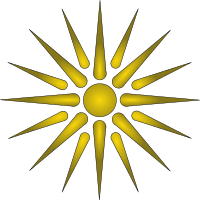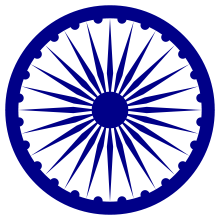Vexilloid

"Vexilloid" is a term used tenuously to describe vexillary (flag-like) objects used by countries, organizations, or individuals as a form of representation other than flags. Whitney Smith coined the term in 1958, defining it as:
An object which functions as a flag but differs from it in some respect, usually appearance. Vexilloids are characteristic of traditional societies and often consist of a staff with an emblem, such as a carved animal, at the top.
"Vexilloid" can be used in a broader sense of any banner (vexillary object) which is not a flag (that is, taking only Smith's first sentence into account). Thus it includes vexilla, banderoles, pennons, streamers, standards, and gonfalons.
The first most primitive proto-vexilloids may have been simply pieces of cloth dipped in the blood of a defeated enemy in pre-historic times, and the precursors of all later vexilloids and flags.[1]
The use of flags replaced the use of vexilloids for general purposes during late medieval times between about 1100 to about 1400 . However, vexilloids still remain in use for specialized purposes, such as for some military units or to symbolize various organizations such as fraternal organization in street parades.[2]
Vexilloids of ancient empires
.svg.png)
- The Achaemenid Empire used a stylized falcon on its vexilloid, which is pictured at right.

- The vexilloid of Alexander the Great's Macedonian Empire displayed the Vergina Sun, shown at right.

- The symbol of the Mauryan Empire was the Ashoka Chakra.
- The vexilloid of Carthage most probably consisted of a spear with a disk and crescent (points upwards), symbolizing the god Baal (sun = disk) and the goddess Tanit (moon = crescent).[3]
- The vexillum of Ancient Rome, shown at the top right of this article, displayed the slogan S·P·Q·R (senātus populusque Rōmānus), "the Senate and the Roman people," in gold on a field of crimson.
- The Sassanian Empire, which is called Eran Shahr (Aryan Empire) in Middle Persian,[4] used a symbol similar to the sun cross on its vexilloid, which is called the Derafsh Kaviani.[5][6]
Vexilloids of medieval empires

- The Byzantine Empire began using a double-headed eagle as its symbol after 1057 CE. The version shown at right is the version used by the Palaiologos dynasty.
- The tugh of Central Asian and Turkic peoples of the pre-Ottoman and Ottoman periods.
- The vexilloid of the Mongol Empire, the only vexilloid of an empire to be three-dimensional rather than mostly a flat surface, the "Yöson Khölt tsagaan tug" (Mongolian: Есөн хөлт цагаан туг) or the "Nine Base White Banners", was composed of nine flag poles decorated with nine off-white horse tail hairs hanging from a round surface with a flame or trident-like shape on the top at the center. The Nine White Banners was a peacetime emblem used by the Khan in front of his yurt. The war flag of the Mongol Empire was the same as the banner at right, except the horse tails were off-black instead of off-white as they were cut from black instead of white horses.
Vexilloids of modern empires
- In Nazi Germany, also referred to as the Third Reich, the SS used vexilloids which they marched with in street parades and at the Nuremberg rallies. These vexilloids were topped with an eagle and a swastika and with the name of the particular locale of the SS contingent carrying the vexilloids. Inscribed on them was the slogan Deutschland Erwache which means Germany Awake.[7][8]
Sources
- Smith, Whitney (1975). Flags Through the Ages and Across the World. New York: McGraw-Hill. ISBN 0-07-059093-1.
References
- ↑ Vexilloids, Flags of the World.
- ↑ Smith, Whitney (1975). Flags Through the Ages and Across the World. New York: McGraw-Hill. ISBN 0-07-059093-1.
- ↑ Vexilloid of the Carthaginian Empire:
- ↑ Wiesehofer, Joseph Ancient Persia New York:1996 I.B. Tauris
- ↑ Website honoring Dr. Kourosh Aryamanesh—Depicts images of the Derafsh Kaviani:
- ↑ Image of the Derafsh Kaviani:
- ↑ Hitler and the Rise of Nazism (Museum of World War II--Navick, Massachusetts, USA): Archived May 29, 2010, at the Wayback Machine.
- ↑ Image of an SS vexilloid: Archived December 18, 2010, at the Wayback Machine.